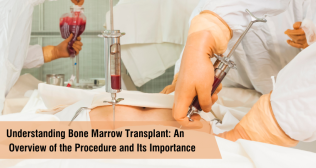
Types of Hemophilia Explained
When your body gets a cut or injury, it launches a complex, near-instantaneous response to stop the bleeding. It’s a biological marvel that most of us never have to think about. For individuals and families living with hemophilia, however, this process is a constant focus. The word "hemophilia" itself can bring a wave of questions and concerns. A common misconception is that it is a single disease with one set of rules. The reality is more nuanced.
Understanding hemophilia begins with a simple question: hemophilia, what is it?
It is a group of inherited bleeding disorders in which the blood does not clot properly. To truly grasp the condition, however, you must understand that there are different types of hemophilia. Knowing the specific type is not just a medical detail; it is the most critical piece of information for effective management and for living a healthy, proactive life.
The Clotting Cascade Is a Chain Reaction
To understand the different types of hemophilia, it helps to first visualize how blood clotting normally works. Think of it as a perfectly synchronized assembly line or a row of falling dominoes. This process is called the coagulation cascade.
When a blood vessel is injured, a series of proteins in the blood called clotting factors are activated one after another. Factor XII triggers Factor XI, which triggers Factor IX, and so on, in a precise sequence. Each activated factor triggers the next one in line. The end result of this cascade is the formation of a strong, stable fibrin clot that seals the injury.
In hemophilia, one of these dominoes is missing or defective. Without it, the chain reaction breaks down, and a strong clot cannot be formed. This leads to the prolonged bleeding characteristic of the disorder. The specific "domino" that is missing is what determines the type of hemophilia a person has.
Hemophilia A Is the Most Common Type
Hemophilia A is what most people think of as classic hemophilia. It is the most prevalent type, accounting for approximately four out of every five cases.
This type is caused by a deficiency in a specific clotting protein called Factor VIII (Factor 8). The genetic instructions for making Factor VIII are located on the X chromosome. Because of this X-linked inheritance, Hemophilia A primarily affects males, who have only one X chromosome.
The severity of Hemophilia A directly correlates with the amount of functional Factor VIII in a person's blood. Someone with very low levels will have a severe form of the disease, while someone with higher, but still deficient, levels will have a milder form. Regardless of severity, the underlying issue is the same: an insufficient amount of Factor VIII to complete the clotting cascade effectively.
Hemophilia B Is the Second Major Type
Hemophilia B is the second most common type of hemophilia. It is caused by a deficiency in a different clotting protein: Factor IX (Factor 9). Like Factor VIII, the gene for Factor IX is also located on the X chromosome, so Hemophilia B also follows an X-linked inheritance pattern and primarily affects males.
A common point of confusion is whether the symptoms are different. The signs and symptoms of Hemophilia B are clinically indistinguishable from those of Hemophilia A. Both can cause spontaneous bleeding into joints and muscles, prolonged bleeding after an injury, and easy bruising. The only way to tell the two apart is through specific blood tests that measure the activity levels of each individual clotting factor.
Hemophilia B is sometimes referred to as "Christmas disease." This name has nothing to do with the holiday. It was named after Stephen Christmas, the first patient who was correctly diagnosed with this specific type of hemophilia in a landmark medical paper published in 1952.
Understanding the Levels of Severity
Beyond the main types of hemophilia, the most important factor in a person's clinical experience is the severity of their condition. The severity is defined by the percentage of normal clotting factor activity in the blood.
Severe Hemophilia
This is defined as having less than 1% of the normal amount of active clotting factor. Individuals with severe hemophilia often experience "spontaneous" bleeding into their joints and muscles, meaning bleeds can occur without any obvious trauma or injury. This is the most challenging form of the disease and requires a proactive, preventative treatment plan.
Moderate Hemophilia
A person with moderate hemophilia has 1% to 5% of the normal clotting factor level. They tend to bleed less frequently than those with the severe form. Spontaneous bleeds are uncommon. Bleeding episodes are typically linked to minor injuries, trauma, or surgical procedures.
Mild Hemophilia
This category includes individuals with more than 5% but less than 40% of the normal factor level. People with mild hemophilia may not even be diagnosed until later in life. They typically only experience bleeding problems after a major injury, a significant surgery, or a dental extraction.
Hemophilia C Is a Rarer Form
While Hemophilia A and Hemophilia B are the most common, it is important to know about a third, much rarer type called Hemophilia C. This is caused by a deficiency of Factor XI. Unlike the other two main types, Hemophilia C is an autosomal disorder, meaning the faulty gene is not on a sex chromosome. This means it affects males and females equally. The bleeding symptoms in Hemophilia C are often less severe and are not as predictable as in the other types.
A Clear Diagnosis Is the First Step
Knowing that hemophilia is not a single disease is crucial. It is a spectrum of disorders, each defined by a specific missing protein. This distinction is the absolute key to treatment, as a person with Hemophilia A must be treated with Factor VIII, while a person with Hemophilia B needs Factor IX.
Your healthcare team at a specialized Hemophilia Treatment Center can provide a precise diagnosis. This clarity is the foundation of a modern, personalized care plan that allows for a healthy and active life.
Frequently Asked Questions
Q1. What is the main difference between Hemophilia A and Hemophilia B?
Ans. The main and only difference is the specific clotting factor that is deficient. Hemophilia A is a deficiency of Factor VIII. Hemophilia B is a deficiency of Factor IX. Their symptoms and inheritance patterns are identical, and they can only be distinguished by specific blood tests.
Q2. Is one type of hemophilia more severe than the other?
Ans. No. The severity of the disease is not determined by the type (A or B), but by the amount of active clotting factor in the blood. Both Hemophilia A and Hemophilia B have a full spectrum of severity, from mild to moderate to severe.
Q3. If my symptoms are mild, do I still need a specific diagnosis?
Ans. Yes, absolutely. Even if you only experience bleeding with major injuries or surgery, knowing your exact diagnosis is vital. This allows your medical team to have the correct type of clotting factor ready to prevent life-threatening bleeding during a medical procedure or after a serious accident.
Q4. Why is it important to know about the different types of hemophilia?
Ans. Knowing the specific type is critical for treatment. The treatment for hemophilia involves replacing the missing factor. Giving Factor IX to a person with Hemophilia A (who needs Factor VIII) would be completely ineffective, and vice versa. An accurate diagnosis ensures you receive the correct and life-saving medication.



















